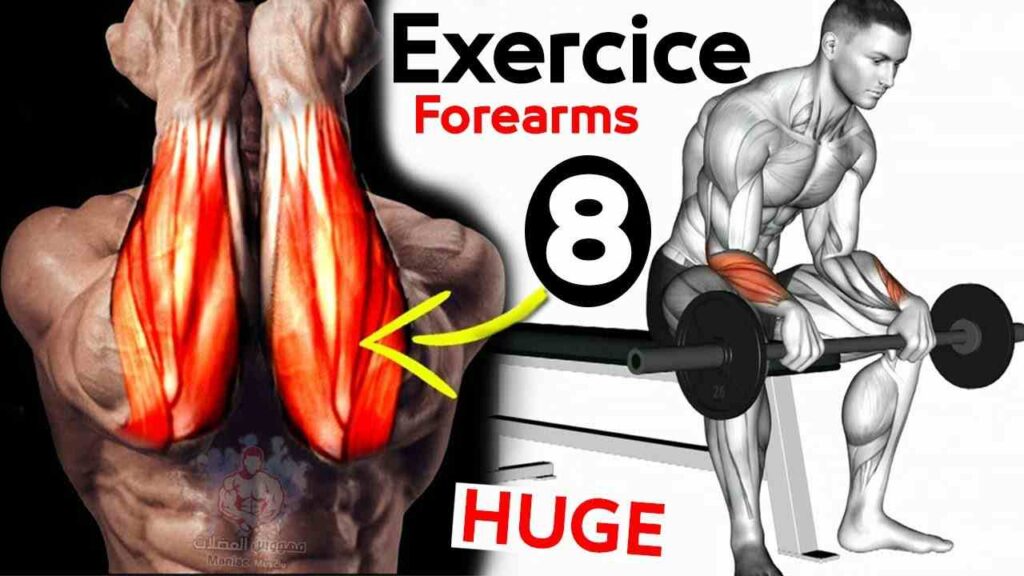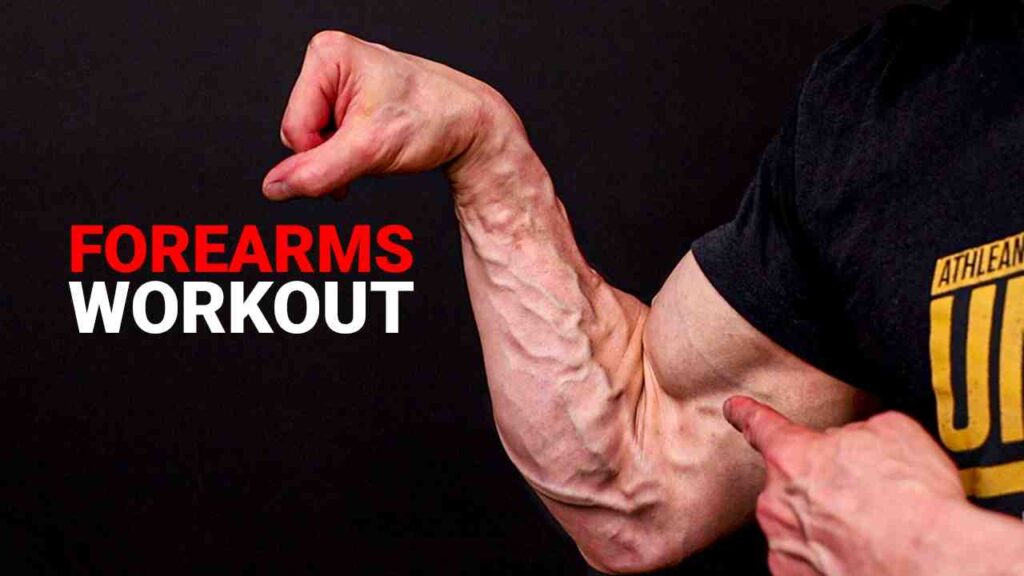Introduction
Welcome to our comprehensive guide on forearm workout with dumbbells, where we’ll explore effective exercises to help you develop strong and well-defined forearms. Whether you’re an athlete looking to improve your grip strength or simply want to enhance your overall upper body strength and aesthetics, incorporating dumbbell exercises into your forearm routine can yield impressive results. Let’s dive in and discover the power of forearm training with dumbbells!
Why Focus on Forearm Strength?
Focusing on forearm strength is essential for several reasons:
- Improved Grip Strength: Strong forearms significantly enhance your grip strength, enabling you to hold on to objects more securely and for longer periods. This improved grip can positively impact various sports, weightlifting, and everyday tasks that require a strong grasp.
- Enhanced Upper Body Performance: The forearms are involved in numerous upper body movements, such as pulling, lifting, and carrying. Strengthening your forearms can lead to improved performance in exercises like deadlifts, rows, and pull-ups, as well as various sports activities.
- Injury Prevention: Weak forearms can lead to imbalances in the upper body, increasing the risk of injuries in the wrists, elbows, and shoulders. By targeting and strengthening the forearms, you create a more balanced and stable upper body, reducing the likelihood of overuse injuries.
- Aesthetic Appeal: Well-defined forearms can add an impressive touch to your overall physique. Strengthening and toning your forearms can create a more balanced and aesthetically pleasing look, especially when combined with well-developed biceps and triceps.
- Functional Benefits: Beyond the gym, strong forearms make everyday activities easier and more manageable. From carrying groceries to performing household tasks, having sturdy forearms improves your ability to handle daily activities with ease.
- Athlete Performance: For athletes, forearm strength is crucial for various sports, such as tennis, golf, rock climbing, and martial arts. Improved forearm strength can lead to better performance in these activities and potentially a competitive edge.
- Confidence Boost: Achieving strong and muscular forearms can boost your self-confidence and sense of accomplishment. Seeing tangible progress in your forearm workouts can be rewarding and motivating, encouraging you to continue your fitness journey.
The Benefits of Forearm Workouts with Dumbbells
Forearm workouts with dumbbells offer a range of benefits, including:
- Improved Grip Strength: Dumbbell exercises specifically target the forearm muscles, leading to enhanced grip strength that translates to better performance in various sports and activities.
- Functional Strength: Strong forearms enable you to perform everyday tasks with ease, such as carrying groceries, opening jars, or lifting objects.
- Balanced Muscular Development: By targeting the forearms, you can achieve a balanced upper body and reduce the risk of muscle imbalances and injuries.
- Versatility: Dumbbells allow for a wide variety of exercises that can target different angles and aspects of forearm strength, ensuring a well-rounded workout routine.
- Convenience: Dumbbell workouts can be done at home or the gym, making them a convenient option for individuals with busy schedules.
- Joint Stability: Strengthening the forearm muscles provides support to the wrist and elbow joints, promoting overall joint stability and reducing the risk of overuse injuries.
- Increased Muscle Definition: Regularly performing forearm exercises with dumbbells can help sculpt and define the muscles in your forearms, resulting in a more aesthetically pleasing appearance.
- Enhanced Sports Performance: Many sports require strong forearm muscles, such as rock climbing, golf, tennis, and martial arts. By incorporating dumbbell exercises into your training, you can improve your performance in these activities by boosting your forearm strength and endurance.
- Injury Prevention: Weak forearms can increase the risk of injuries, particularly in the wrists and elbows. Strengthening the forearm muscles through targeted dumbbell exercises can help stabilize these joints, reducing the likelihood of strains, sprains, and other common injuries.
- Improved Wrist Stability: Strong forearms provide better support and stability to the wrists, which is essential for activities that involve repetitive wrist movements, such as typing, playing musical instruments, or performing manual labor.
SHOP FOR THE ADJUSTABLE DUMBBELL SET ON AMAZON
Overall, incorporating dumbbell exercises into your forearm workout routine is a highly effective way to unlock your hidden strength and achieve functional gains.
Essential Equipment: Choosing the Right Dumbbells
Before we delve into the specific forearm exercises with dumbbells, it’s important to choose the right equipment to maximize your workout effectiveness. Here are some tips for selecting the ideal dumbbells:
Weight Selection
- Start with a moderate weight that challenges your forearms without compromising your form and technique.
- Beginners may opt for lighter dumbbells, while more experienced individuals can gradually increase the weight as they progress.
- Remember, it’s better to start with lighter weights and gradually increase rather than using excessively heavy dumbbells and risking injury.
Adjustable Dumbbells
- Investing in adjustable dumbbells allows you to vary the weight according to your fitness level and exercise requirements.
- These versatile dumbbells typically come with weight plates that can be easily added or removed, providing flexibility in your training routine.
Grip Comfort
- Look for dumbbells with ergonomic handles that provide a comfortable grip.
- The handle should have a textured or rubberized surface to prevent slippage and improve control during exercises.
- Ensure that the dumbbells are well-balanced and evenly distributed, allowing for a natural and stable grip.
Durability and Quality
- Choose dumbbells made from high-quality materials that can withstand regular use and heavy lifting.
- Opt for dumbbells with durable coatings such as rubber or urethane, as they offer better protection against wear and tear.
- Check the construction and make sure the weights are securely attached to the handles to prevent accidents during workouts.
Space and Storage
- Consider the available space in your workout area and choose dumbbells that are compact and easy to store.
- If space is limited, adjustable dumbbells are an excellent option as they take up less room compared to a full set of individual dumbbells.
SHOP FOR THE KETTLEBELLS ON AMAZON
Remember, selecting the right dumbbells is crucial for a safe and effective forearm workout. Take your time to assess your fitness level, goals, and budget when making your purchase.
Forearm Workout with Dumbbells: Exercise Techniques
Now that we understand the importance of forearm strength, let’s delve into some effective exercise techniques using dumbbells to target and strengthen your forearms. Incorporating these exercises into your routine will help you achieve impressive gains in strength, endurance, and muscle definition.
1. Wrist Curls
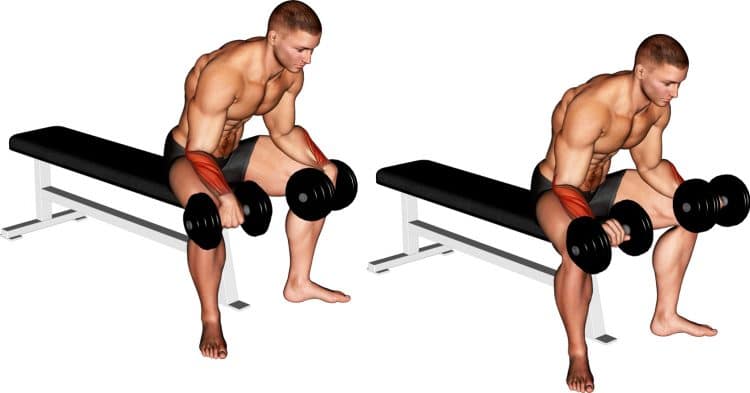
Wrist curls are a classic exercise that targets the flexor muscles of your forearms, building strength and endurance. Here’s how to perform them:
- Sit on a bench or chair with your feet flat on the ground and hold a dumbbell in each hand, palms facing up.
- Rest your forearms on your thighs with your wrists hanging just beyond your knees.
- Slowly curl your wrists upward, contracting your forearm muscles.
- Pause for a moment at the top, then lower the dumbbells back to the starting position.
- Aim for 3 sets of 12-15 repetitions.
2. Reverse Wrist Curls
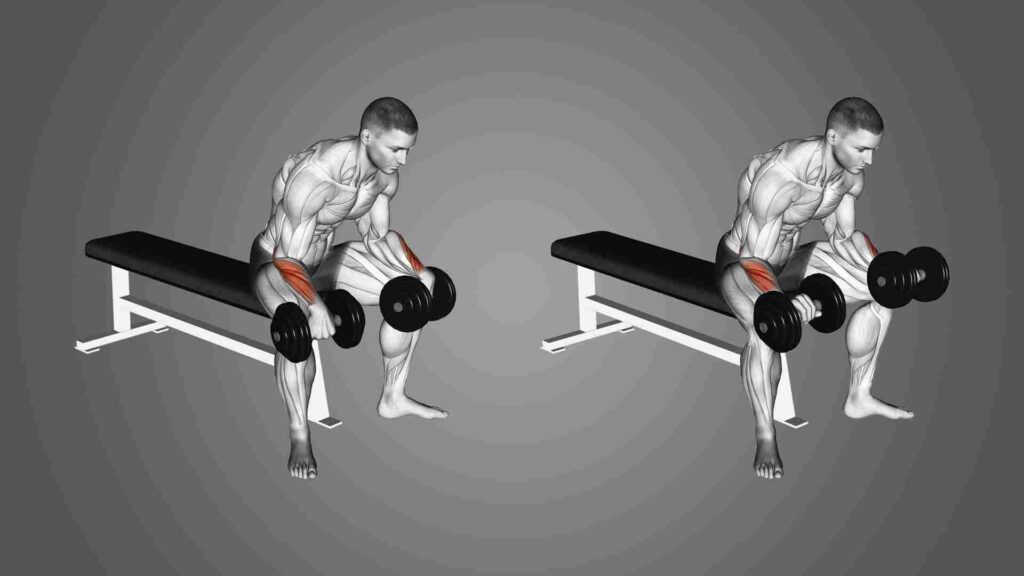
Reverse wrist curls target the extensor muscles of your forearms, helping to balance the strength and development. Follow these steps:
- Assume the same starting position as wrist curls, but with your palms facing down.
- Curl your wrists upward, this time bringing the backs of your hands toward your forearms.
- Pause briefly at the top and then slowly lower the dumbbells back down.
- Perform 3 sets of 12-15 repetitions.
3. Hammer Curls
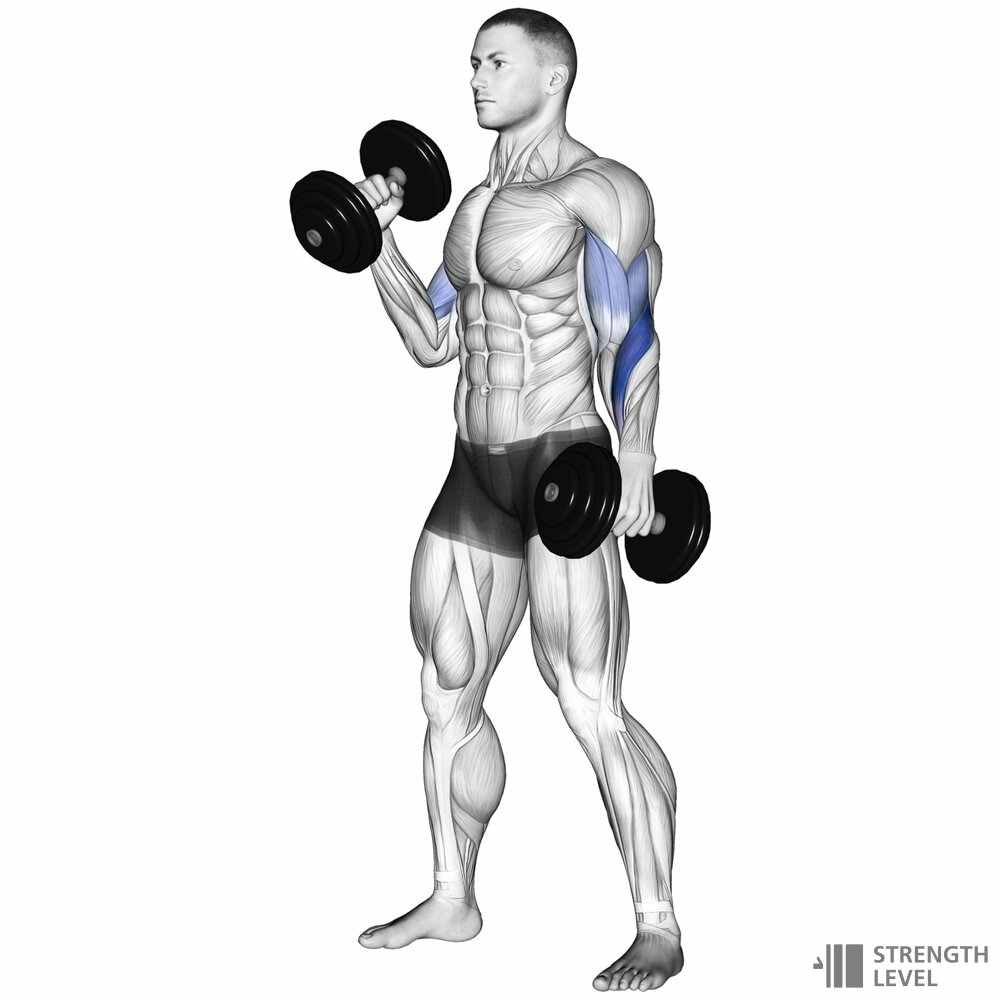
Hammer curls not only engage your biceps but also activate your forearm muscles, including the brachioradialis. Here’s how to perform hammer curls with dumbbells:
- Stand with your feet shoulder-width apart, holding a dumbbell in each hand with your palms facing your body.
- Keep your elbows close to your sides and your upper arms stationary.
- Curl the dumbbells up toward your shoulders, maintaining a neutral grip (thumbs pointing upward).
- Squeeze your biceps and forearms at the top, then slowly lower the dumbbells back down.
- Aim for 3 sets of 10-12 repetitions.
4. Farmer’s Walks
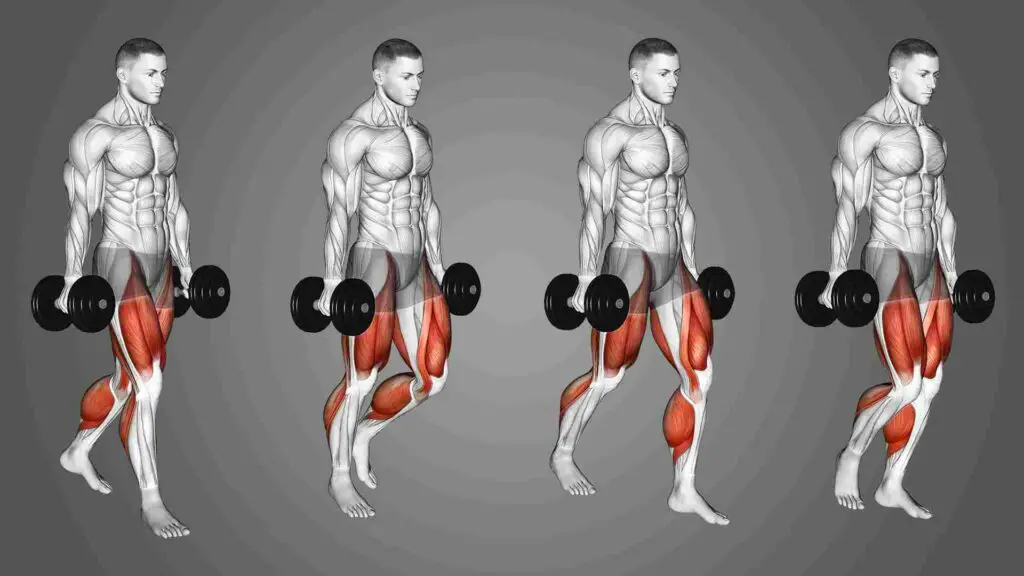
Farmer’s walks are a functional exercise that not only strengthens your forearms but also improves grip strength and overall stability. This exercise requires a pair of heavy dumbbells. Here’s how to perform them:
- Stand tall with your feet hip-width apart and hold a dumbbell in each hand, palms facing inward.
- Keep your core engaged and shoulders back as you walk forward, taking small, controlled steps.
- Maintain a straight posture and avoid swinging your arms.
- Walk for a predetermined distance or time, gradually increasing the weight as you progress.
- Perform 3-4 sets of 30-60 seconds.
5. Static Holds
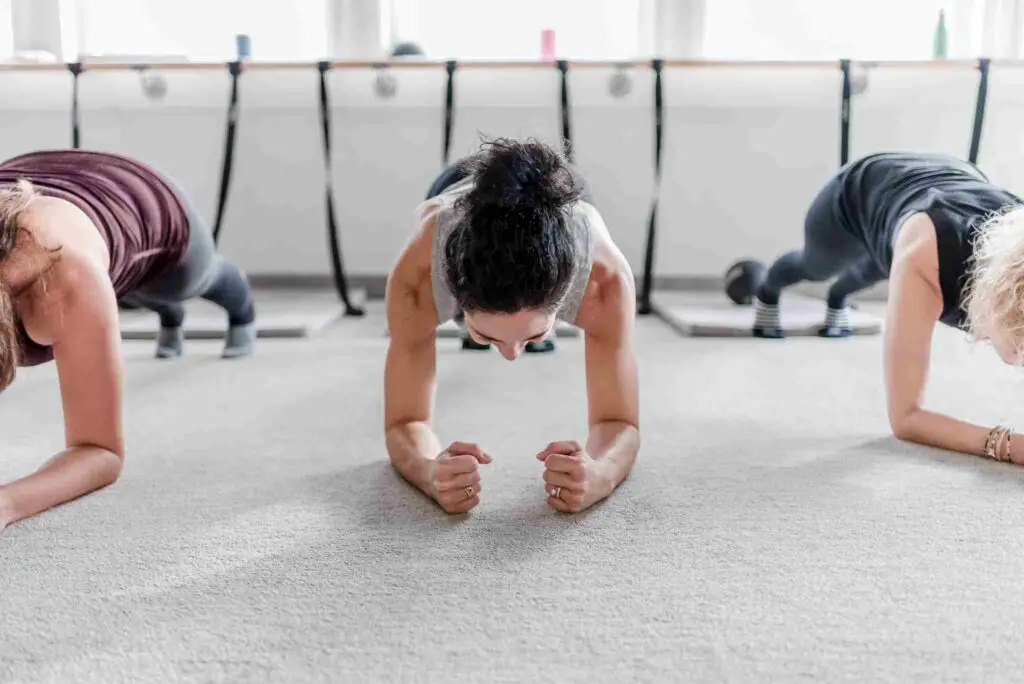
Static holds are an isometric exercise that targets both the flexor and extensor muscles of your forearms. This exercise helps build endurance and stability. Here’s how to do it:
- Sit on a bench or chair with your feet flat on the ground and hold a dumbbell in each hand.
- Rest your forearms on your thighs with your wrists hanging just beyond your knees.
- Hold the dumbbells at your sides, palms facing up.
- Maintain this position for 30-60 seconds, focusing on engaging your forearm muscles.
- Gradually increase the duration of the holds as you become more comfortable.
6. Forearm Twists
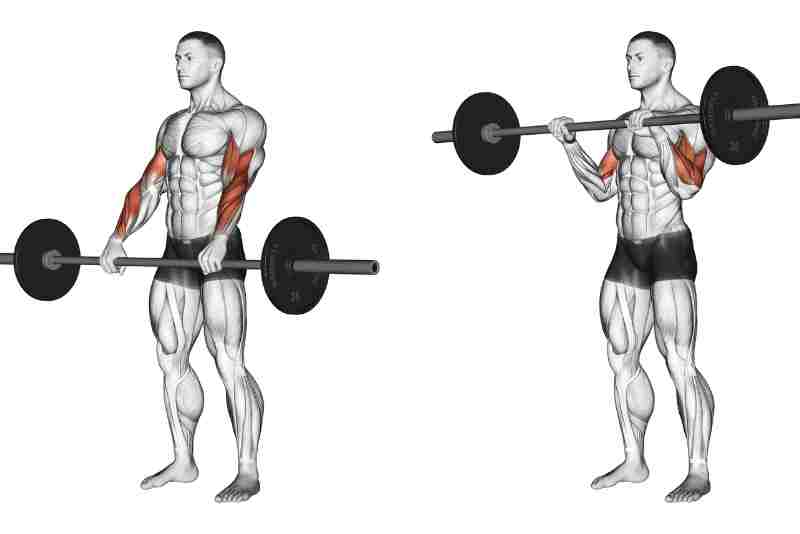
Forearm twists target the rotational muscles in your forearms, enhancing strength and mobility. Here’s how to perform this exercise:
- Sit on a bench or chair with your feet flat on the ground and hold a dumbbell in each hand.
- Rest your forearms on your thighs with your wrists hanging just beyond your knees.
- Hold the dumbbells with an overhand grip, palms facing down.
- Rotate your wrists outward, moving the dumbbells away from your body.
- Slowly rotate your wrists inward, bringing the dumbbells closer together.
- Perform 3 sets of 12-15 repetitions.
SHOP FOR THE BARBELL WEIGHTS ON AMAZON
Remember to warm up before starting your forearm workout, and gradually increase the weight and intensity as your strength improves. Be sure to maintain proper form throughout each exercise to maximize the benefits and reduce the risk of injury.
Tips for Proper Form and Injury Prevention
Proper nutrition plays a vital role in supporting forearm muscle development. To maximize the effectiveness of your forearm workouts with dumbbells, it’s important to fuel your body with the right nutrients. Here are some key nutritional considerations:
- Sufficient Protein Intake: Protein is essential for muscle repair and growth. Include lean sources of protein in your diet, such as chicken, turkey, fish, tofu, eggs, and dairy products. Aim for a protein-rich meal or snack within 30 minutes to an hour after your forearm workouts to promote muscle recovery.
- Balanced Diet: Ensure you have a well-rounded diet that includes a variety of fruits, vegetables, whole grains, and healthy fats. These provide essential vitamins, minerals, and antioxidants that support overall muscle health.
- Hydration: Adequate hydration is often overlooked but is crucial for muscle function and recovery. Drink plenty of water throughout the day to stay hydrated and support optimal muscle performance.
- Pre-Workout Fuel: Prior to your forearm workout, consume a light meal or snack that includes complex carbohydrates for sustained energy. Good options include whole-grain toast, oatmeal, or a banana.
- Post-Workout Recovery: After your forearm workout, replenish your body with a balanced meal that includes protein and carbohydrates. This combination aids in muscle repair and glycogen replenishment.
- Healthy Fats: Include sources of healthy fats, such as avocados, nuts, seeds, and olive oil, in your diet. These fats provide energy and help maintain overall joint and muscle health.
Remember, consistency in both your workouts and nutrition is key to achieving your forearm muscle development goals. Consult with a registered dietitian or nutritionist for personalized advice tailored to your specific needs and goals.
The Role of Nutrition in Forearm Muscle Development
Proper nutrition plays a vital role in forearm muscle development. To support muscle growth and recovery, ensure you are consuming an adequate amount of protein, which is essential for building and repairing muscles. Include lean protein sources such as chicken, fish, tofu, or legumes in your diet. Additionally, make sure you’re getting enough carbohydrates to provide energy for your workouts and promote muscle glycogen replenishment.
SHOP FOR THE RESISTANCE BAND ON AMAZON
Include complex carbs like whole grains, fruits, and vegetables in your meals. Don’t forget about healthy fats, as they are crucial for hormone production and overall health. Incorporate sources like avocados, nuts, and olive oil. Lastly, stay hydrated by drinking enough water throughout the day to optimize muscle function and recovery.
FAQs
Q.1 Are forearm workouts with dumbbells suitable for beginners?
Ans. Absolutely! Forearm workouts with dumbbells can be tailored to suit individuals of all fitness levels, including beginners. Start with lighter weights and focus on proper form and technique. Gradually increase the weight as you build strength and confidence.
Q.2 How often should I train my forearms?
Ans. The frequency of your forearm training depends on various factors, including your fitness goals, overall training schedule, and recovery capacity. As a general guideline, aim to train your forearms 2-3 times per week, allowing at least 48 hours of rest between sessions to promote muscle recovery and growth.
Q.3 Can forearm exercises with dumbbells help prevent injuries?
Ans. Yes, indeed! Strengthening your forearms can contribute to injury prevention by improving grip strength and forearm stability. Strong forearms provide better support for your wrists and elbows, reducing the risk of strain or overuse injuries. Incorporating forearm exercises with dumbbells into your routine can enhance the overall resilience of your upper body.
Q.4 Can I achieve muscle hypertrophy solely through dumbbell exercises?
Ans. Absolutely! While dumbbells may seem like a simple piece of equipment, they offer a wide range of exercises that target multiple muscle groups, including the forearms. By following a well-designed workout routine, progressively increasing the weights, and ensuring proper nutrition, you can achieve significant muscle hypertrophy and strength gains with dumbbell exercises alone.
Q.5 Can a forearm workout with dumbbells improve my grip strength?
Ans. Absolutely! Forearm workout with dumbbells are excellent for improving grip strength. Exercises like wrist curls, reverse wrist curls, and farmer’s walks specifically target the muscles involved in gripping, allowing you to develop a stronger and more powerful grip over time.
Q.6 Are there any alternatives to dumbbells for forearm training?
Ans. Yes, there are alternative tools you can use for forearm training if you don’t have access to dumbbells. Some options include using barbells, kettlebells, resistance bands, or even household items like water bottles or cans. The key is to find a weight or resistance that challenges your forearms while maintaining proper form.
Q.7 Can forearm workouts with dumbbells help with wrist pain or carpal tunnel syndrome?
Ans. A forearm workout with dumbbells can be beneficial for individuals experiencing wrist pain or carpal tunnel syndrome. However, it’s crucial to consult with a healthcare professional or physical therapist before starting any exercise program if you have pre-existing wrist conditions. They can provide specific recommendations and modifications to ensure safe and effective training.
Q.8 Should I perform high-repetition or low-repetition sets for forearm exercises?
Ans. Both high-repetition and low-repetition sets can be effective for forearm training, depending on your goals. Higher repetitions with lighter weights can help improve muscular endurance, while lower repetitions with heavier weights focus more on strength and muscle development. Consider incorporating a combination of both in your workout routine for well-rounded forearm strength.
Q.9 Is it necessary to use heavy weights for effective forearm training?
Ans. Using heavy weights is not the only way to achieve effective forearm training. While heavy weights can help build strength and muscle mass, it’s equally important to focus on proper form, controlled movements, and gradually increasing resistance over time. Lighter weights with proper technique and higher repetitions can still provide significant benefits to your forearm strength and endurance.
Conclusion
In conclusion, forearm workout with dumbbells are an essential and often overlooked aspect of strength training that can yield impressive results. Developing strong forearms not only enhances your grip strength but also contributes to overall upper body strength and functionality in everyday activities.
Throughout this guide, we have explored various dumbbell exercises specifically targeted to engage and challenge your forearm muscles effectively. From wrist curls and reverse wrist curls to hammer curls and static holds, each exercise provides unique benefits to sculpt your forearms.
Remember to choose the appropriate dumbbell weight for your fitness level, focus on proper form and technique, and gradually increase the intensity as you progress. Consistency and dedication are the keys to achieving significant improvements in your forearm strength and muscle definition.

Good day, and welcome to Fitthour. My name is Shubham Vijay, and I am a certified personal trainer and nutrition coach with 6 years of experience in the fitness industry. At Fitthour, we specialize in types of training, such as strength training, cardio, or HIIT, and our mission is to help clients achieve their fitness goals and improve their overall health.

